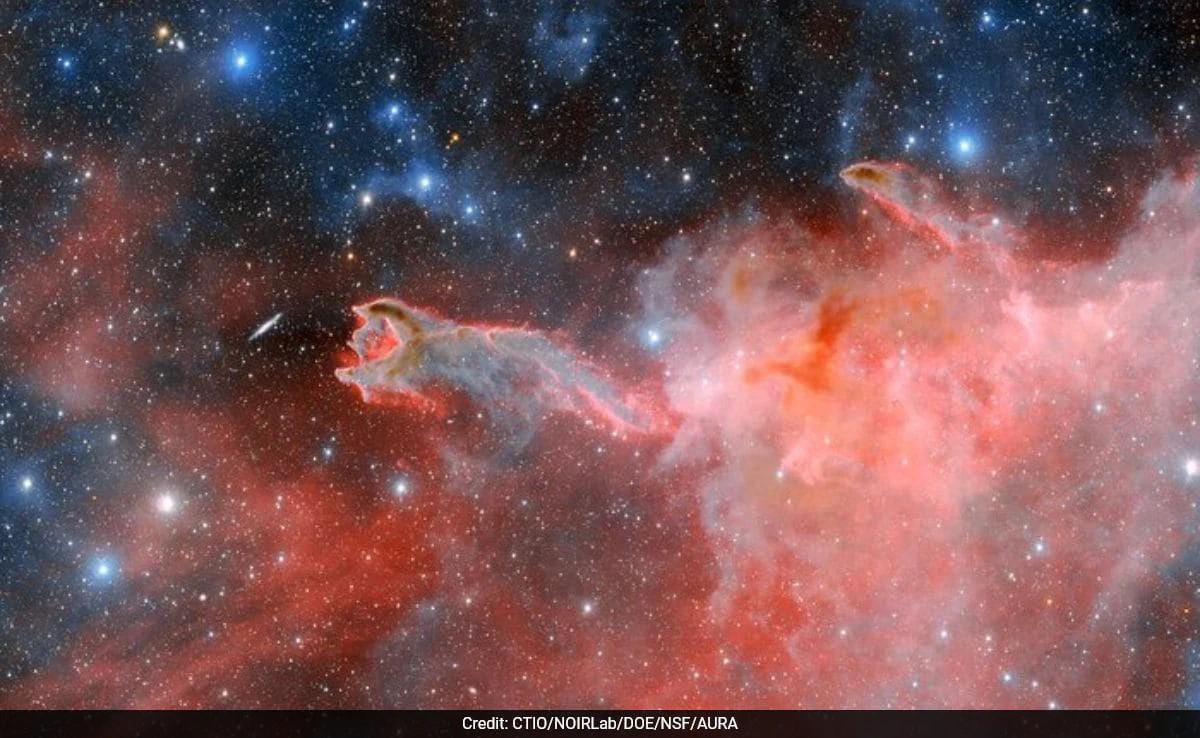A Dark Energy Camera (DECam) has taken a series of amazing pictures that appear to show a phantom hand reaching out towards a far-off spiral galaxy. Celestial structures known as “God’s Hand” are made of gas and dust clouds. This unusual occurrence, a cometary globule, was photographed by the DECam on the Victor M. Blanco Telescope in Chile, providing a window into the depths of the cosmos.
First observed in 1976, cometary globules are unrelated to comets.
These are comet-like, compact, dense clouds of gas and dust in space with a long, faintly luminous tail. The strong radiation from surrounding stars forms them, and they usually contain young stars in their cores. Within galaxies, cometary globules are essential to the process of star creation and evolution.
The cometary globule CG 4, which is located 1,300 light-years away in the constellation ‘Puppis’ inside the Milky Way galaxy, is seen in the most current “God’s Hand” photographs. CG 4 features a long tail that stretches eight light-years from its primary dusty head, which resembles a twisted hand and is 1.5 light-years away. (A light year is the amount of time that light travels; it is roughly 9.46 trillion kilometers).
“God’s Hand” seems to be stretching out toward ESO 257-19 (PGC 21338), a spiral galaxy located more than 100 million light-years away. Despite being called “God’s Hand,” the celestial formation is not supernatural in any form.
The stunning image of CG 4 was captured by the sophisticated DECam (Dark Energy Camera) on the 7,200-foot-high Victor M. Blanco Telescope in Chile. By chance, cometary globules were discovered in 1976 by astronomers examining pictures taken with the UK Schmidt Telescope. Due to their extreme faintness and frequent stellar dust cover on their tails, these formations are difficult to identify.CG 4’s outer rim and head contain ionized hydrogen, which gives out a slight red glow that may be seen by the DECam thanks to a specific filter. The cometary globule is visible because of this radiation, but over time, it erodes its head. Still, there is sufficient material within for the formation of new stars similar to our sun.

